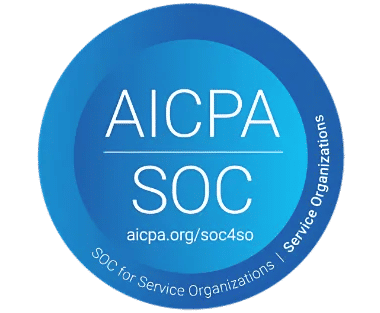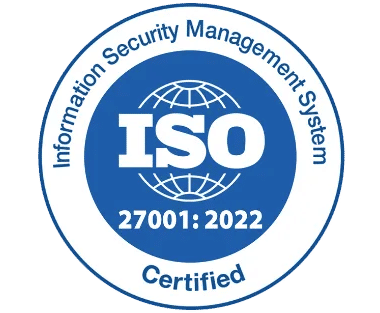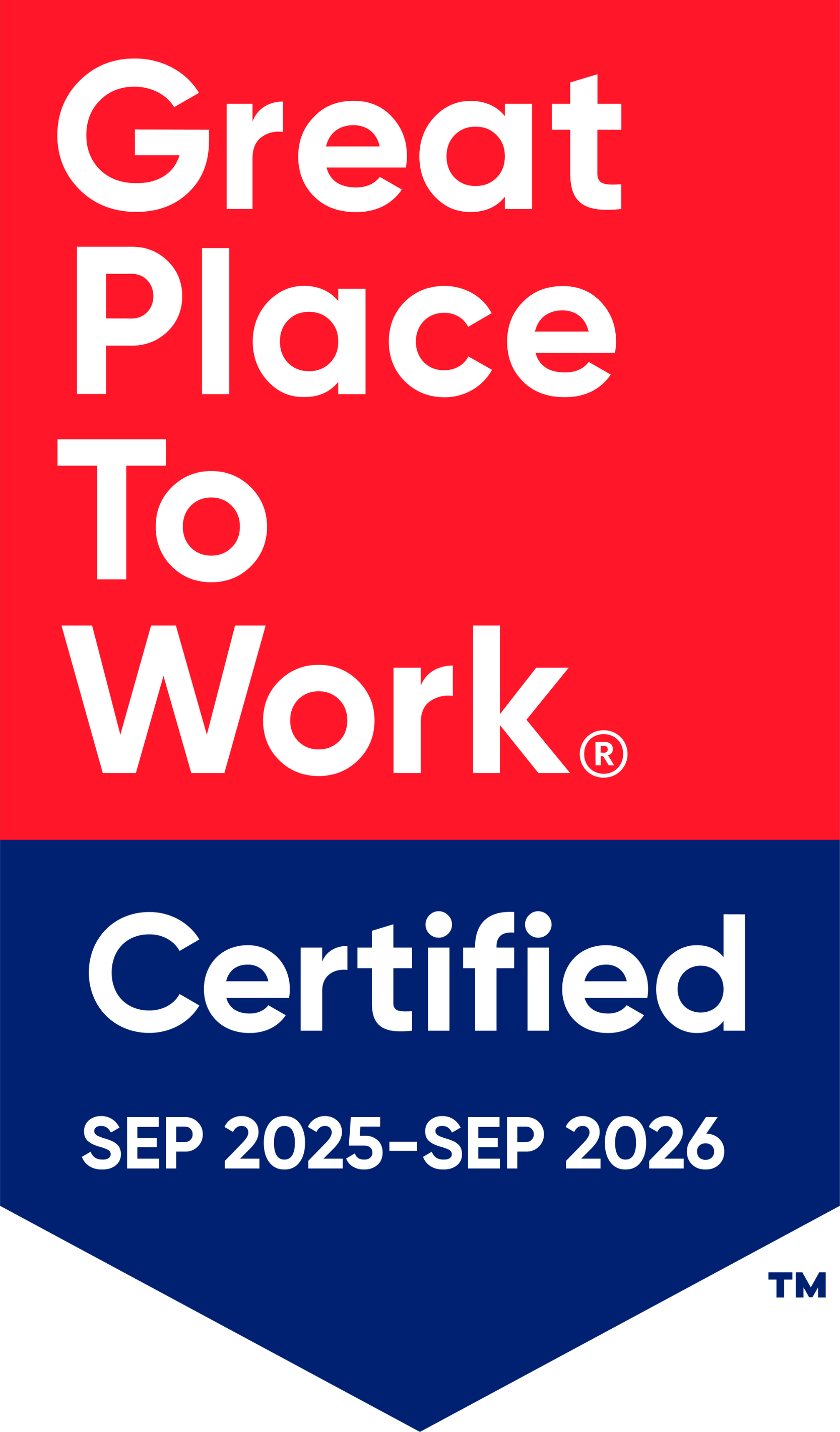Best LMS for Small Businesses: Max ROI, Low Cost

Small businesses need to make every dollar count, especially when it comes to employee training. Investing in the right LMS (Learning Management System) can boost productivity without draining your budget. But how do you find the perfect platform that offers maximum return on investment (ROI) at a low cost? Let’s explore the best LMS options that give you real value.
What Is an LMS and Why Do Small Businesses Need One?
A Learning Management System (LMS) is a digital platform designed to create, manage, and deliver training programs. It centralizes employee learning, making it easier for small businesses to train their teams effectively and affordably. Unlike traditional in-person sessions, an LMS offers on-demand access to learning materials, making training more flexible and scalable.
For small businesses, an LMS is not just a luxury it’s a strategic tool for growth. It helps you upskill employees, reduce turnover, and ensure compliance without the hefty expenses of travel, venues, or printed materials. With automation and data tracking, it also simplifies administrative tasks, saving valuable time.
Key Benefits of Using an LMS for Small Businesses
1. Cost Savings
Training employees through an LMS significantly reduces overhead expenses.
- No need for physical venues, travel, or accommodation costs.
- Eliminates spending on printed training materials.
- On-demand courses reduce the need for live instructors, cutting facilitation costs.
- Allows you to reuse and update content without recurring expenses.
Companies using LMS platforms reduce their training costs by 40-60% compared to traditional methods.
2. Consistency and Standardization
An LMS ensures that every employee receives the same quality of training, regardless of their location or shift.
- Pre-recorded lessons deliver consistent information.
- Standardized modules help align employees with company policies and procedures.
- Removes the variability of instructor-led training, ensuring uniform knowledge transfer.
- Enhances compliance by ensuring every team member receives required safety or policy training.
Businesses that use LMS platforms report a 23% improvement in training consistency.
3. Flexibility and Remote Access
Small businesses often have limited resources for in-person training. An LMS offers flexibility by enabling employees to learn anytime, anywhere.
- Mobile compatibility allows employees to access courses on their smartphones or tablets.
- Reduces scheduling conflicts by offering self-paced learning.
- Ideal for remote or hybrid teams, ensuring everyone receives equal training opportunities.
- Provides multilingual support, making it easy to train a diverse workforce.
Companies using LMS with remote access experience a 72% increase in course completion rates.
4. Time Efficiency Through Automation
Small businesses often struggle with limited HR resources. An LMS automates time-consuming administrative tasks, such as:
- Grading quizzes and assignments automatically.
- Tracking employee progress in real time.
- Sending automated reminders for incomplete courses.
- Generating certification upon course completion.
By reducing manual effort, your team can focus on core business activities rather than paperwork.
Businesses using LMS platforms reduce their administrative workload by 30-40%.
5. Scalability for Business Growth
As your business grows, so do your training needs. An LMS offers seamless scalability without requiring major changes.
- You can add new employees and enroll them in existing courses instantly.
- Expand your content library to include new skills, compliance training, or certifications.
- Cloud-based LMS platforms allow you to scale without investing in new infrastructure.
- No need for additional trainers or larger venues as your team expands.
Small businesses using scalable LMS platforms reduce their training costs by 50% over five years.
6. Higher Employee Retention and Satisfaction
Providing consistent learning opportunities boosts employee satisfaction and reduces turnover.
- Employees feel valued when they have access to personal and professional growth resources.
- Continuous learning keeps employees engaged and motivated.
- LMS platforms often include gamification elements (badges, points, leaderboards) that make learning fun.
- Improved skills lead to career advancement, boosting job satisfaction.
Companies using LMS platforms report an 18% higher employee retention rate due to better learning experiences.
By implementing an LMS, small businesses can offer cost-effective, flexible, and scalable training programs. This not only enhances employee skills but also drives long-term business growth and profitability.
How LMS Boosts ROI for Small Businesses
Investing in the right Learning Management System (LMS) is not just about delivering training it’s about maximizing returns. For small businesses, an LMS can significantly reduce costs, boost employee productivity, and minimize compliance risks, making it a powerful tool for business growth.
Here’s how an LMS drives impressive ROI for small businesses:
1. Reduced Training Costs
Training employees through traditional methods—such as classroom sessions, printed manuals, and instructor-led courses—can be expensive and time-consuming. An LMS drastically cuts these expenses by offering a centralized, digital training solution.
- No need to hire costly instructors or pay for physical classrooms.
- Eliminates expenses related to travel, venue, and accommodation.
- Digital content is reusable, saving you money on future training sessions.
- Automated assessments reduce the need for manual grading, saving staff time.
- LMS platforms allow you to scale training without increasing costs.
Companies save 40-60% on training expenses by switching to e-learning platforms.
2. Increased Employee Productivity
A well-implemented LMS enhances employee efficiency by providing quick and flexible access to learning materials. This results in faster onboarding, better skill development, and improved performance.
- Faster Onboarding: Structured and automated onboarding programs help new employees get up to speed quickly, reducing downtime.
- On-Demand Learning: Employees can access training at their convenience without disrupting work hours.
- Personalized Learning Paths: LMS platforms offer adaptive learning, tailoring content to individual needs, which speeds up skill acquisition.
- Microlearning Modules: Bite-sized lessons help employees learn faster and retain information better.
Well-trained employees are 20% more productive than their undertrained peers.
3. Improved Compliance and Risk Management
Small businesses must adhere to industry regulations and policies to avoid legal issues and maintain credibility. An LMS helps ensure compliance by keeping employees aligned with the latest standards.
- Automated Course Updates: LMS platforms automatically update compliance courses, keeping employees informed of regulatory changes.
- Certification Tracking: LMS platforms track certification renewals and send reminders, preventing expired credentials.
- Compliance Reporting: Built-in reports provide detailed records of completed courses, reducing the risk of audit penalties.
- Reduced Legal Risks: Consistent, up-to-date compliance training reduces the chances of non-compliance fines.
Businesses using LMS platforms for compliance training reduce legal issues by 30%.
4. Enhanced Employee Engagement and Retention
Engaged employees are more likely to stay with your company, reducing turnover costs. An LMS improves engagement through interactive learning experiences and ongoing development opportunities.
- Gamification Features: Points, badges, and leaderboards boost motivation and encourage course completion.
- Progress Tracking: Employees can see their learning progress, which promotes accountability and goal achievement.
- Career Development: Continuous learning boosts employee satisfaction by offering skill enhancement opportunities.
- Flexible Learning: Employees appreciate the freedom to learn at their own pace, making them feel more valued.
Companies with strong learning cultures see 30-50% higher retention rates.
Key Features to Look for in a Budget-Friendly LMS
When selecting an LMS for your small business, prioritize features that maximize value without unnecessary add-ons. Here’s what to look for:
1. User-Friendly Interface
An LMS with an intuitive interface ensures that both admins and employees can easily navigate the platform without extensive training.
- Simple Navigation: Clear menus and easy-to-access courses reduce confusion.
- Drag-and-Drop Course Creation: Simplifies building and organizing training materials.
- Mobile Compatibility: Ensure the LMS offers a responsive design, allowing employees to learn on smartphones or tablets.
- Customization Options: Branding capabilities (logos, color schemes) offer a personalized learning experience.
LMS platforms with user-friendly interfaces see 60% higher adoption rates.
2. Scalability
Your LMS should be able to grow with your business without requiring a complete overhaul.
- Add More Users Easily: A scalable LMS lets you add employees without significant cost increases.
- Flexible Pricing Models: Choose platforms with pay-per-user or subscription plans to avoid overpaying.
- Modular Expansion: Opt for platforms that allow you to add new features (e.g., certification programs) as your business needs evolve.
Scalable LMS platforms reduce training costs by 50% over five years.
3. Reporting and Analytics
A budget-friendly LMS should offer detailed reporting capabilities to track training effectiveness and identify improvement areas.
- Employee Progress Tracking: Monitor course completion rates and assessment scores.
- Knowledge Gap Analysis: Identify weak areas in employee skills and tailor future training accordingly.
- Custom Reports: Generate detailed reports to share with stakeholders or for compliance audits.
- Real-Time Insights: Use analytics to measure training ROI and make data-driven decisions.
LMS platforms with advanced reporting features improve training efficiency by 35%.
4. Security and Data Privacy
Protecting employee data is essential, especially with growing cybersecurity concerns. A reliable LMS should include robust security measures to keep sensitive information safe.
- Data Encryption: Ensures confidential employee records remain protected.
- GDPR and SOC 2 Compliance: Verify the LMS adheres to data privacy regulations.
- Regular Backups: Protects against data loss or corruption.
- Multi-Factor Authentication (MFA): Adds an extra layer of security.
LMS platforms with SOC 2 compliance reduce data breaches by 40.
5. Integration with Existing Tools
Seamless integration with your current business systems enhances efficiency and productivity.
- HR System Integration: Connect your LMS with HR and payroll software for smooth employee onboarding.
- Communication Tools: Integration with platforms like Slack or Microsoft Teams enables easy course access.
- API Compatibility: Choose an LMS with open APIs to connect with your existing tools.
- Single Sign-On (SSO): Allows employees to access the LMS using existing company credentials.
Businesses that integrate their LMS with existing systems boost productivity by 45% .
By investing in the right LMS, small businesses can boost productivity, reduce costs, and enhance employee satisfaction. Prioritizing essential features ensures you get the most value from your investment, ultimately driving higher ROI.
Best LMS Platforms for Small Businesses with High ROI
For small businesses, choosing an LMS that balances affordability with robust features is key to maximizing ROI. The right platform streamlines training, enhances employee performance, and saves valuable time and money. Here’s what makes the best LMS platforms stand out for small businesses
1. Cost-Effective Pricing Without Hidden Fees
- The best LMS platforms offer transparent, flexible pricing models.
- Look for per-user or tier-based pricing to avoid overpaying.
- Many LMS platforms offer scalable plans, allowing you to expand without significant cost increases.
- Companies using LMS platforms reduce training expenses by 40-60% compared to traditional methods.
2. Easy-to-Use Interface
- A simple, intuitive dashboard reduces the learning curve for both employees and admins.
- User-friendly course creation tools save time and resources.
- Mobile compatibility ensures employees can access training anytime, anywhere.
- LMS platforms with mobile access boost course completion rates by 72% .
3. Automated Tracking and Reporting
- Built-in analytics help small businesses monitor employee progress.
- Automated certification and compliance tracking reduce administrative work.
- Real-time insights allow you to identify and address skill gaps.
- Companies using LMS with real-time reporting see 25% faster employee skill improvement.
4. Scalable for Business Growth
- A good LMS should grow with your business without requiring major upgrades.
- Scalable platforms allow you to add more users or content without costly migrations.
- Flexible pricing models help you expand your training program affordably.
- Businesses that scale their LMS usage reduce training costs by 50% over five years.
5. Interactive and Engaging Content
- Interactive modules like quizzes, videos, and simulations enhance learning retention.
- Gamification features (points, badges, leaderboards) keep employees motivated.
- Personalized learning paths improve engagement and effectiveness.
Gamified LMS platforms increase learner engagement by 60%.
By prioritizing affordability, usability, and scalability, the best LMS platforms for small businesses offer long-term value and deliver measurable returns on your investment.
How to Maximize LMS ROI for Your Small Business
To fully capitalize on your LMS investment, you need to go beyond just implementing the platform you must optimize how it’s used. By leveraging smart strategies like microlearning, automation, and gamification, small businesses can enhance employee engagement, boost productivity, and reduce training costs, ultimately driving higher returns.
Here’s how to maximize your LMS ROI effectively:
1. Use Microlearning for Faster, More Effective Training
Microlearning is a training method that delivers content in short, focused modules instead of lengthy sessions. This strategy not only makes learning more digestible but also improves knowledge retention and speeds up course completion.
- Bite-Sized Lessons: Shorter lessons (5-10 minutes) prevent information overload and make it easier for employees to absorb key concepts.
- Improved Retention: Studies show that people retain 80% more information when learning in smaller chunks compared to traditional lengthy sessions.
- Faster Course Completion: Employees are more likely to finish shorter lessons, leading to higher course completion rates.
- Easier Scheduling: Microlearning fits into busy schedules, allowing employees to learn during downtime or short breaks without disrupting their workflow.
- Mobile-Friendly Learning: Small lessons are easier to access on mobile devices, promoting learning on the go.
Businesses using microlearning see a 50% increase in learning engagement and 22% faster skill acquisition.
Break complex topics into smaller modules, each focusing on a single concept. Add quizzes or interactive activities between lessons to reinforce learning.
2. Automate Administrative Tasks to Save Time
Administrative overhead can drain your team’s productivity. Automating routine tasks through your LMS reduces manual labour, allowing your HR and management teams to focus on higher-value activities.
- Automated Enrolments: Set up rules to automatically enroll employees into relevant courses based on their roles, departments, or skill levels.
- Reminder Notifications: Use automated email or in-platform reminders for upcoming or overdue courses to ensure employees stay on track.
- Grading and Assessments: Automate grading for quizzes and tests, saving HR teams hours of work.
- Progress Tracking: Set up automatic reports on course completion rates, scores, and employee progress, eliminating the need for manual tracking.
- Certification Management: Automatically issue and track certifications, ensuring compliance requirements are met without HR intervention.
LMS automation reduces administrative workload by 40% and cuts HR time spent on training tasks in half (Source: eLearning Industry).
Use LMS automation to schedule recurring compliance courses and track certification expiration dates, ensuring no deadlines are missed.
3. Offer On-Demand Training for Flexible Learning
On-demand training gives employees the freedom to learn at their own pace, eliminating the need for live sessions or rigid schedules. This flexibility not only enhances productivity but also boosts engagement and knowledge retention.
- Anytime, Anywhere Learning: Employees can access courses 24/7 from any device, fitting learning into their schedules without disrupting work hours.
- Reduced Scheduling Conflicts: No need to coordinate live training sessions, which is especially beneficial for remote or hybrid teams.
- Self-Paced Learning: Employees can revisit materials whenever needed, reinforcing knowledge over time.
- Increased Course Completion Rates: Employees are more likely to complete courses when they can learn at their own pace.
- Supports Different Learning Styles: On-demand content caters to visual, auditory, and kinaesthetic learners by offering a variety of media (videos, podcasts, infographics).
Companies that offer on-demand training see 50% higher engagement rates and 60% faster course completion. Use pre-recorded video lessons, interactive PDFs, and downloadable resources to make your on-demand content more dynamic and accessible.
4. Gamify the Learning Experience to Boost Engagement
Gamification turns learning into a fun and interactive experience, boosting employee motivation and course completion rates. By adding game-like elements, you can make training more rewarding and engaging.
- Points and Badges: Employees earn points or badges for completing modules, passing quizzes, or reaching milestones, fostering healthy competition.
- Leaderboards: Display top performers on leaderboards to encourage friendly competition and drive participation.
- Quizzes and Challenges: Include interactive quizzes and mini challenges with rewards to keep learners engaged.
- Achievement Unlocking: Unlocking new content or levels upon course completion adds an incentive to progress.
- Instant Feedback: Use real-time feedback to acknowledge achievements, keeping learners motivated.
Gamified learning boosts employee engagement by 60% and improves knowledge retention by 40% (Source: eLearning Industry).
Incorporate small rewards (gift cards, certificates, or public recognition) to increase motivation and drive ongoing participation.
5. Leverage Data Analytics for Continuous Improvement
To maximize ROI, you need to track and analyse LMS data regularly. This helps you identify what’s working and what needs improvement.
- Track Course Completion Rates: Identify bottlenecks or disengagement points and optimize course content.
- Measure Skill Improvement: Use pre- and post-assessments to measure knowledge gains.
- Analyse Engagement Metrics: Monitor login frequency, module completion rates, and time spent on courses.
- Identify Learning Gaps: Use LMS reports to identify areas where employees struggle and adjust content accordingly.
- Optimize Training Programs: Use data insights to refine and improve your training strategies, maximizing LMS effectiveness.
Companies that leverage LMS data analytics see a 30% increase in training efficiency and 25% higher ROI.
Regularly review LMS analytics dashboards and adjust content or delivery methods based on the data
6. Prioritize Mobile Learning
As remote and hybrid work models grow, mobile learning has become essential. Ensuring your LMS is mobile-friendly boosts accessibility and participation.
- Learn on the Go: Mobile access allows employees to train from anywhere, increasing flexibility.
- Push Notifications: Use mobile reminders to prompt course completions and encourage participation.
- Cross-Device Sync: Ensure employees can seamlessly switch between desktop and mobile devices without losing progress.
- Offline Learning: Some LMS platforms offer offline access, enabling employees to complete training without an internet connection.
Mobile learning increases course completion rates by 45% and knowledge retention by 25%.
Ensure your LMS offers a responsive design and mobile app to maximize accessibility
Common LMS Challenges and Solutions for Small Businesses
While LMS platforms offer a range of benefits, small businesses often face challenges during implementation and usage. From low employee engagement to integration difficulties, these issues can reduce the effectiveness of your LMS and hinder your ROI goals. However, with the right strategies, these obstacles can be overcome, ensuring you maximize the value of your training platform.
Here’s a detailed look at common LMS challenges and practical solutions to address them:
1. Low Employee Engagement
One of the biggest hurdles small businesses face with an LMS is low learner participation and disengagement. When employees view training as dull or irrelevant, they are less likely to complete courses, reducing the platform’s impact.
The Problem:
- Boring Content: Text-heavy, static courses fail to capture attention.
- Lack of Interaction: Passive learning experiences (watching videos or reading PDFs) lead to low retention rates.
- No Clear Incentives: Without rewards or recognition, employees may feel less motivated to complete courses.
- Time Constraints: Employees may deprioritize training due to their busy work schedules.
The Solution:
To boost engagement, you need to make learning more interactive, rewarding, and accessible.
Use Gamification:
- Incorporate points, badges, and leaderboards to make learning feel like a game.
- Award points for completing modules or passing assessments.
- Create leaderboards to spark healthy competition.
- Offer badges for milestones (e.g., “Customer Service Expert” badge).
Make Content Interactive:
- Include quizzes, polls, and scenario-based learning to encourage participation.
- Add drag-and-drop exercises or clickable diagrams for hands-on engagement.
Offer Microlearning:
- Break down courses into short, digestible modules (5-10 minutes) to fit into employees’ schedules.
- Incorporate Multimedia:
- Use a mix of videos, infographics, animations, and simulations to cater to different learning styles.
Create Incentives:
- Recognize top performers with rewards like gift cards or public acknowledgment.
- Offer certificates for course completion to boost motivation.
Companies that use gamified e-learning experiences see a 60% increase in learner engagement and 45% higher completion rates.
Personalize learning paths based on employee roles, skills, or goals to make training feel more relevant and meaningful.
2. Integration Issues with Existing Tools
Many small businesses struggle with LMS integration challenges, which can lead to data silos, inefficiencies, and a fragmented tech stack.
The Problem:
- Limited Integration Options: Some LMS platforms have restricted compatibility with third-party tools.
- Data Silos: Inconsistent data flow between the LMS and HR, payroll, or communication systems.
- Manual Data Entry: Lack of integration forces teams to manually transfer data, increasing the risk of errors.
- Workflow Disruptions: Employees need to switch between multiple platforms, slowing down productivity.
The Solution:
To streamline operations, choose an LMS that offers seamless integration with your existing tools.
Select LMS Platforms with Native Integrations:
- Look for platforms that offer out-of-the-box integrations with tools you already use (e.g., HR software, communication platforms, or CRMs).
- Example: Integrating with HR systems allows automatic enrolment when new hires join.
Use API or Zapier Connectors:
- If your LMS lacks direct integrations, use API connectors or Zapier to bridge the gap.
- Automate data transfer between the LMS and other business tools.
Ensure Single Sign-On (SSO):
- Use SSO authentication to reduce login fatigue and simplify access for employees.
Test Compatibility Before Implementation:
- Before adopting an LMS, conduct a tech compatibility audit to ensure it integrates smoothly with your existing systems.
Companies that fully integrate their LMS with other business tools report 30% fewer administrative errors and 20% faster data processing.
Prioritize LMS platforms with pre-built connectors for popular tools like Slack, Microsoft Teams, Google Workspace, and HRIS platforms.
3. Lack of Analytics and Reporting
Without detailed analytics, small businesses can struggle to measure the effectiveness of their LMS. Incomplete or unclear data makes it difficult to optimize training programs and assess ROI.
The Problem:
- Limited Insights: Basic LMS platforms may only provide surface-level metrics (e.g., course completion rates) without deeper insights.
- No Skill Progress Tracking: Inability to measure skill improvements or knowledge gains.
- Difficulty Identifying Gaps: Lack of detailed reporting makes it harder to spot weak areas in the training program.
- Inefficient Decision-Making: Without clear data, HR teams struggle to make data-driven decisions.
The Solution:
Choose an LMS with robust reporting and data visualization capabilities to gain actionable insights.
Advanced Reporting Features:
- Look for platforms that offer customizable reports on course completion rates, learner progress, and quiz scores.
- Generate reports on specific departments or employee groups to identify trends.
Real-Time Tracking:
- Use real-time analytics to monitor learner engagement as it happens.
- Identify courses where employees drop off or struggle.
Skill Assessments:
- Use pre- and post-course assessments to measure knowledge improvements.
- Identify which employees need additional support or upskilling.
Certification and Compliance Tracking:
- Track certification expirations and automatically reassign courses when recertification is due.
Data-Driven Decision-Making:
- Use LMS insights to refine course content, improve engagement strategies, and boost overall training effectiveness.
Businesses that use LMS analytics effectively report a 28% increase in training efficiency and 25% higher employee productivity (Source: Forbes).
Leverage LMS data to personalize learning experiences, targeting weaker areas with tailored content.
4. Resistance to LMS Adoption
Small businesses may face employee resistance when introducing a new LMS, as people often dislike changes to their routines.
The Problem:
- Lack of Awareness: Employees may not understand the benefits of the LMS, making them hesitant to use it.
- Complex Interfaces: Confusing or unintuitive LMS interfaces discourage usage.
- Fear of Technology: Employees who are less tech-savvy may be reluctant to engage with digital platforms.
- Low Motivation: Without clear incentives or accountability, employees may neglect their training responsibilities.
The Solution:
To ensure successful adoption, focus on user experience, clear communication, and continuous support.
User-Friendly Interface:
- Choose an LMS with a simple, intuitive design to reduce the learning curve.
- Include step-by-step tutorials or onboarding videos.
Communicate the Benefits:
- Highlight how the LMS will make their jobs easier (e.g., faster skill acquisition, self-paced learning).
Offer Incentives:
- Provide rewards or recognition for course completion to encourage participation.
Continuous Support:
- Offer ongoing tech support and user training to address issues promptly.
Gather Employee Feedback:
- Regularly survey employees to improve LMS usability and address pain points.
Organizations that provide clear communication and support during LMS adoption see 40% higher employee participation (Source: Training Journal).
Assign LMS champions (enthusiastic employees) to promote the platform and assist less tech-savvy colleagues.
Conclusion
The right LMS can transform your small business by boosting productivity, reducing costs, and improving employee satisfaction. With affordable, feature-rich platforms, you can maximize ROI without overspending. By leveraging automation, offering flexible training, and focusing on employee engagement, you can make the most of your LMS investment.
Frequently Asked Questions
How Do I Choose the Best LMS for My Small Business?
To select the best LMS, focus on ease of use, scalability, and key features like course creation, reporting, and mobile access. Ensure the platform integrates with your existing tools and offers reliable support. Prioritize an LMS with transparent pricing and a free trial to test its effectiveness before committing.
How much does an LMS cost for small businesses?
Most LMS platforms charge $2–$10 per user/month, offering a cost-effective solution for small businesses. This pricing model helps companies scale their training without overspending, while only paying for active users, maximizing their training budget and ROI.
How long does it take to set up an LMS?
Most LMS platforms take around 2–6 weeks to fully implement, depending on factors like content volume and the need for tool integrations.
What are must-have LMS features for small businesses?
Essential LMS features include course creation tools, detailed reporting, mobile access, and integration capabilities with existing business systems for seamless operations.
How do I measure the ROI of my LMS?
To assess LMS ROI, track key metrics such as employee productivity, course completion rates, and turnover reduction. Improved performance and retention indicate a positive return on your investment.









_svxLrd-8yH.png)

_2VYSFUTN5m.png)

_JiluXJRGNl.svg)

_2djTKNocf.png)





_Rapo0hRMBy.png)

















